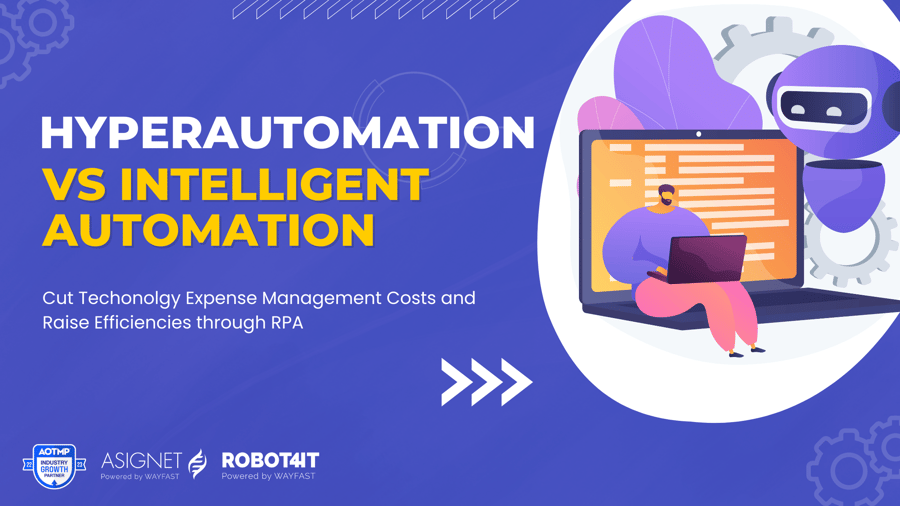A growing number of companies are turning to Bring Your Own Device (BYOD) policies and IT Expense...
Hyperautomation vs intelligent automation
The main difference between Hyperautomation and Intelligent automation is that Hyperautomation is a more sophisticated automation process with cognitive abilities that allow humans to be included in the process.

In the world of business, automation is a very popular topic. With the rise of technology and its growth in our society, businesses are looking for ways to improve their processes with less human involvement. Some companies are now taking this one step further by using intelligent automation to help better serve their customers. This post will explore what exactly makes up hyperautomation vs intelligent automation, as well as how they can benefit your business today.
Automation is best viewed as a continuous process that moves from “doing” to “thinking” and from process focus to data focus. As human workers move from repetitive, high-volume tasks to activities that require sharper cognitive insight, more complex automation technologies are needed.
How does Intelligent Automation (IA) play a role?
In a nutshell, intelligent automation is composed of robotic process automation (RPA), artificial intelligence (AI), and machine learning (ML). Hyperautomation is a disciplined, business-driven approach that organizations use to quickly identify, examine and automate as many business and IT processes as possible. Consequently, intelligent automation is most often used as part of hyperautomation efforts.
Both refer to the use of automation to enhance processes through cutting-edge technologies and improvements. In doing so, these tools contribute to quality improvements in automation results and benefits customers with their quality interactions.
What is Intelligent Automation (IA)?
Intelligent automation incorporates artificial intelligence (AI) technologies such as Machine Learning, Natural Language Processing, Structured Data Interaction, Intelligent document processing, and RPA. RPA is not Intelligent Automation. It automates routine rule-based processes and simple tasks and it goes a step further and supports humans in decision making.
Because AI can simulate forms of human intelligence, hyperautomation can process higher-level tasks that require a certain level of reasoning, judgment, decision making, and analysis.
Why should businesses embrace Hyperautomation?
Although intelligent automation has helped many organizations improve their bottom line through process efficiencies, businesses need an alternative when it comes to repetitive administrative tasks – especially considering the fact that not every company has access to RPA today due to a lack of skills in terms of implementing this technology effectively.
Some of the technologies and concepts that are included in hyperautomation are Automated Workflows, machine learning, artificial intelligence, low-code application platforms, robotic process automation (RPA).
The three main benefits of hyperautomation are increased profits, reduced expenses, and ensuring compliance.
A.I. is powered by different learning modules and automation tools, hyperautomation also uses those modules and includes software (Process Mining, No/Low Code Apps, Analytics) and automation tools. It is a more sophisticated automation process with cognitive skills that can include humans in the process.
The uncertainty of predicting when and how the next business disruption is likely to occur means preparing your organization for the future, investing to survive and grow, and adapting traditional approaches to your core business and operations. This requires embracing Hyperautomation.
Why Hyperautomation is the future of Intelligent Automation?
Hyperautomation can enable faster deployment of new capabilities without compromising security standards while ensuring compliance at every step along the way.
With hyper-automation, the future of work is not about having tasks performed by robots, but about completely redesigning the work that employees do with technology. Increase collaboration so that humans, as key decision-makers, can use technology to interpret big data and apply higher-value insights to their business.
Get started today
Don’t wait. Give yourself an edge over your competitors today. Contact us to get learn more about adding hyperautomation to your organization to cut costs and raise efficiencies.



